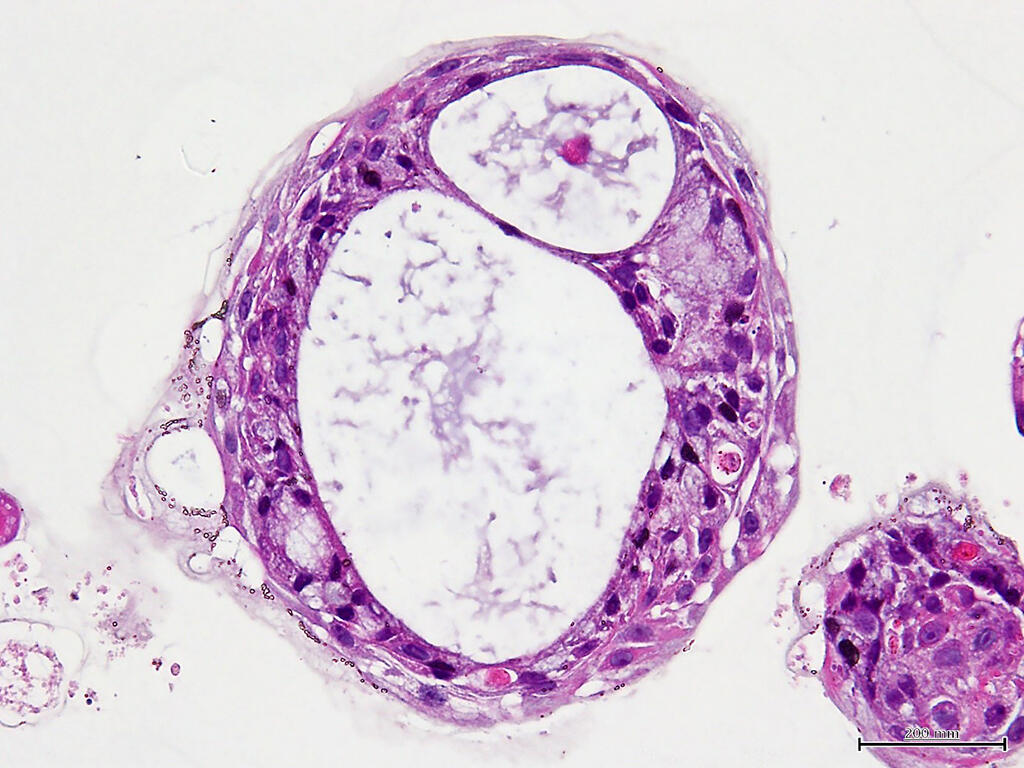A research group consisting of Junior Associate Professor Kazuo Takayama, researcher Emi Sano, and researcher Rina Hashimoto of the Department of Cell Growth and Differentiation, Center for iPS Cell Research and Application, Kyoto University (CiRA), Associate Professor Tatsuya Suzuki and Professor Toru Okamoto of the Research Institute for Microbial Diseases, Osaka University, and their colleagues has announced the development of a new bronchial organoid-derived air-liquid interface model, BO-ALI, with a high infection efficiency rate for SARS-CoV-2 (COVID-19). The group developed this model with ciliated cells arranged on atmosphere facing edge using an air-liquid interface cell-culture. The group ascertained that it is possible to confirm the efficacy of anti-viral drugs, including remdesivir, and to investigate the infection rate of variants. The group said that several drug discovery studies using previously developed organoids are underway. Their research outcomes were published in the May 30 edition of Communications Biology, an international science journal.

HE-stained image of a bronchial organoid differentiated from normal human bronchial epithelial cells. The lumen side of the organoid corresponds to the lumen of the bronchi.
Credit: Kazuo Takayama, CiRA Kyoto University
An organoid is a tissue with a three-dimensional structure and the functions of an internal organ, derived from stem cells in vitro using test tubes and other lab equipment. When it comes to experimental animals, organoids are used as experimental models that are no different from living humans. The research group aimed to develop an organoid that faithfully mimicked the human respiratory organs and could be used for large-scale and highly accurate COVID-19 drug discovery research.
First, the group developed a method of creating bronchial organoids (BO) from normal human bronchial epithelial cells in order to create a model of the bronchi, an area infected by COVID-19 in its early stages. The BO were spherical, measuring 100-200 μm, and the group confirmed that they were made up of ciliated cells, club cells, goblet cells and basal cells, just like the bronchi in living people.
However, when the spherical BO were infected with COVID-19, the infection stopped at the outer edge. When suspended BO was infected with the virus, the infection efficiency increased. The researchers believed that this was because the ciliated cells (the infected parts) of the spherical BO were distributed in the lumen, and so the virus could not access them.
Thus, the group created BO-ALI, a planar model in which the ciliated cells were exposed and arranged on the outside edge of the model, using an air-liquid interface cell-culture. When they compared the infection efficiencies, the group found that BO-ALI was 2000 times higher than BO. At this point, SARS-CoV-2 proteins were mainly confirmed in the cilia but were barely confirmed at all in the basal cells. The ciliated cells died due to the viral infection, but the group also ascertained that the surviving basal cells regenerated the bronchial epithelial cell layer. They believed that the basal cells played an important role in regeneration.
The group also evaluated the efficacy of COVID-19 therapeutic agents. They applied camostat, remdesivir and molnupiravir in turn to infected BO-ALI, and were able to confirm a significant decrease in infectious viral load in the culture supernatant.
When the group infected BO-ALI with eight variants of SARS-CoV-2, they observed that the viral genome load in the culture supernatant increased over time with regard to all the variants. Through these results the group were able to confirm the usefulness of BO-ALI for analytical research.
This article has been translated by JST with permission from The Science News Ltd.(https://sci-news.co.jp/). Unauthorized reproduction of the article and photographs is prohibited.




